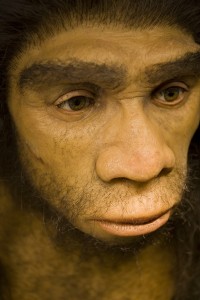 How long should we breastfeed? It’s a question that is debated, especially as breastfeeding advocacy has gained momentum. Mainstream media calls breastfeeding extreme when it reaches into toddler years. Shakira makes news when she says she will breastfeed her child until college. Last year, Time magazine featured a mother breastfeeding a three-year-0ld with the title “Are you mom enough?”
How long should we breastfeed? It’s a question that is debated, especially as breastfeeding advocacy has gained momentum. Mainstream media calls breastfeeding extreme when it reaches into toddler years. Shakira makes news when she says she will breastfeed her child until college. Last year, Time magazine featured a mother breastfeeding a three-year-0ld with the title “Are you mom enough?”
We shouldn’t look towards the mainstream media and celebrities for breastfeeding advice, but they reflect a growing trend to breastfeed our children longer. There are health benefits of extended breastfeeding for mom and baby. Even the conservative group the American Academy of Pediatrics recommends breastfeeding longer than was typical for mothers and babies when I was born in the 1970s:
Breastfeeding is a natural and beneficial source of nutrition and provides the healthiest start for an infant. In addition to the nutritional benefits, breastfeeding promotes a unique and emotional connection between mother and baby. In the policy statement, “Breastfeeding and the Use of Human Milk,” published in the March 2012 issue of Pediatrics (published online Feb. 27), the American Academy of Pediatrics (AAP) reaffirms its recommendation of exclusive breastfeeding for about the first six months of a baby’s life, followed by breastfeeding in combination with the introduction of complementary foods until at least 12 months of age, and continuation of breastfeeding for as long as mutually desired by mother and baby.
Just how long should we as humans breastfeed? When looking at nature, we find primates nurse their babies for seven years. When looking at primitive cultures, we find breastfeeding extends to the fifth year. What about our ancient ancestors?
New research by Manish Arora of the Icahn School of Medicine at Mount Sinai in New York has analyzed the tooth of a neanderthal. Arora has discovered this neanderthal breastfed exclusively for about seven months. Children were completely weaned around 15 months.
NPR reports:
When Arora and his colleagues started to analyze the chemical makeup of the teeth, they noticed an interesting pattern in the distribution of the element barium.
“During the period of breast-feeding, the barium levels in teeth were higher,” Arora says. “At weaning, the levels of barium in teeth started to drop.”…
He could take a tooth and tell when that tooth’s owner stopped nursing. His colleague Tanya Smith, who studies human evolution at Harvard, knew just the tooth to test first.
“It’s a first molar tooth from a Neanderthal from a site in Belgium called Scladina,” Smith says.
The tooth is 100,000 years old and perfectly preserved. Analyzing the tooth’s barium distribution, the researchers determined that this Neanderthal started weaning after about 7 months, and then transitioned to a mixed diet. At 15 months, the barium signal dropped abruptly, as if mother and child had been separated.
It seems neanderthals were following AAP guidelines.
Just like busy moms in modern times, Smith believes “the shorter nursing times would have given mothers the freedom to reproduce more frequently and gather food for the group.” Reproducing more frequently may no longer be the goal nor gathering food, but working moms are sometimes challenged to maintain breastfeeding. Thankfully there are laws and accessories, like [amazon_link id=”B004HWXCJS” target=”_blank” ]breast pumps[/amazon_link], to help mothers overcome the limitations of busy lives.
Image: Caveman on Bigstock
One wonders what we can learn from the practices of a subspecies of homo sapiens that did not survive, while modern humans did survive.
And breast milk in those days probably was very healthful compared to human milk in our currently more-polluted times, which typically includes (among other things) neurodevelopmentally-toxic dioxins in concentrations over 80 times higher than the level that the EPA has determined to be a safe dosage, and in concentrations many times higher than in formula. (see http://www.breastfeeding-toxins.info ).
Yes, the American Academy of Pediatrics continues to recommend extended breastfeeding, but when information such as the above is presented to them, along with CDC data showing that health outcomes have become worse since breastfeeding greatly increased beginning in the 1970’s, the AAP has no reply. The data is taken from impeccably authoritative sources (CDC, NIH, EPA), so it isn’t surprising that they don’t (or can’t) respond to it.
That study you cite actually says that breastfeeding in a sample size of ONE child was ABRUPTLY ended at 15 months which is NOT typical for Neanderthals. Please make sure you read your sources.
I agree with last commenter. You have extrapolated the findings to mean ALL Neanderthals and ALL Neanderthal children. This was one tooth from one child. That does not tell us the breastfeeding and weaning habits of all Neanderthals. Now, I am a huge supporter of breastfeeding – into toddler years, as well. But this post is just skewing the information. I think the science used in this study is fantastic though and hope they learn more.
Yes, it is one tooth. I did not try to hide that fact. I just found it interesting.
I also changed some of the language. Thanks for the comments. I did not intend to be misleading.